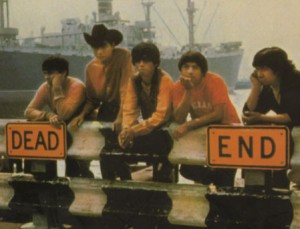“Dr. Ike” Padnose, Founder of The Ponderosa Stomp (“3 Days of the Best Music You’ve Never Heard Of”)
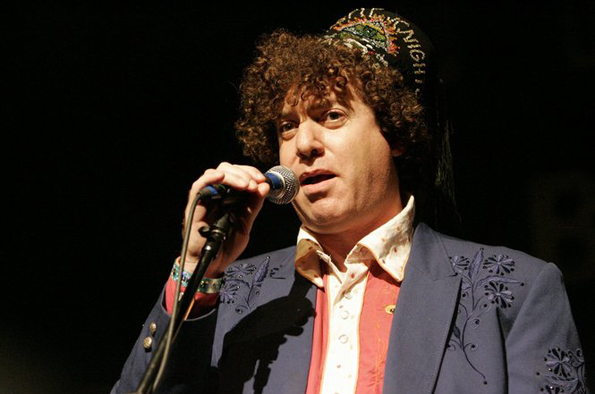
Ira “Dr. Ike” Padnose (photo: Joseph Rosen)
When a young, New Orleans-based anesthesiologist named Ira “Dr. Ike” Padnos got married, the milestone marked the beginning of two passion-fueled, major life commitments. The first, of course, was to his wife. The second began as a nod to his love of music and addiction to record collecting. More than a decade later, it’s grown into The Ponderosa Stomp, a three-day music festival and conference celebrating the “unsung heroes of American music.”
As Dr. Ike recently told Anti-Gravity magazine, the first Stomp was technically at his wedding, when he says he “went through my record collection and hired a whole bunch of artists I always wanted to see play.” The music segment of the party was such a hit that he and a few like-minded friends decided to stage a formal show. They formed a non-profit group called the Mystic Knights of the Mau Mau to back the affair, and made it their mission to present artists whose important contributions to American music had gone largely unrecognized since their heyday.
The 2013 Stomp, which takes place in New Orleans from Oct. 3-5, features 20 headlining artists, two days of panel discussions and interviews, a film component, record show and all-night vinyl DJ blitz.
A few days before the event kicked off, Dr. Ike chatted with New Orleans writer Jennifer Odell about how the Stomp developed and what to expect this year.
How do you pull this off every year while balancing a career as a doctor?
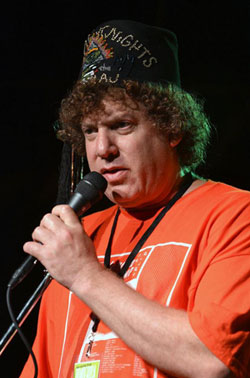
Dr. Ike (photo: Kim Welsch)
Part of the Stomp is about bringing a good vinyl collection to life. When did you start getting serious about record collecting?
I bought my first record in maybe 4th or 5th grade. The first I can remember that I took home was “Revolver.” And then I just started buying records in high school, collecting more and more records and by college it was definitely on.
To what extent is the Stomp still inspired by your personal music taste?
It pretty much still is. Now have a selection committee of five or six people but a lot of us have similar taste, so a lot of it still springs out of our collections. Everybody wants raw blues guitar players … crazy R&B guys, we want rockabilly to have a raw, nastier side, and with the garage, it needs to have that really snotty, hard, fast thing. With soul singers we probably go more to the deep soul guys. While we do book some of the Northern soul we tend for them to be more influenced by Stax.
That’s not to say we don’t go all over the place musically … We have varied tastes. I think it informs a lot of the Stomp and what we do.
Has the Stomp ever functioned as Step One in a comeback campaign for an artist or band?
That happens quite frequently. … We were the first people to present Howard Tate and then the great soul singer was out there making records and touring. Barbara Lynn, Roy Head, both of them had many hits back in the day but weren’t getting great gigs. Now they’re back, and the Stomp’s getting them out there to people.
We had Jimmy Lee Fautheree, who used to be part of a country duo named Jimmy & Jonny. Elvis at one point opened for them back in the day, and Elvis actually replaced them when they went on tour on [the classic TV series] “Louisiana Hayride.” [Jimmy] hadn’t played in years before the Stomp. Next thing you know, he got booked in England and put out a record . . .
“Everybody wants raw blues guitar players…crazy R&B guys, we want rockabilly to have a raw, nastier side, and with the garage, it needs to have that really snotty, hard, fast thing. With soul singers we probably go more to the deep soul guys…”
A lot of what happens is we have people that look at our schedule and the next thing you know they’re booked at festivals all over the place: blues, soul, rockabilly festivals around the US and in Europe and in Japan. So we’ll get these artists and people will see that they’re around and they’ll start getting gigs again.
All of this year’s artists are new to the Stomp — was that intentional?
It was intentional. We wanted to do something different that we haven’t done in years. Rather than have the Stomp feel the same, we said, ‘let’s shake it up,’ so we decided to go back to the days where everybody would be new and that was quite challenging to find 20 new artists.Any reason for the heavy focus on garage bands this year or did it just work out that way?
It just works out that way. Some years it’s more bluesy. Some years it’s more New Orleans influenced. Some years it’s more rockabilly. Last year it was pretty much a soul Stax tribute, other years it was a tribute to girl [groups].
You guys have also produced shows and events at Lincoln Center and SXSW. How did those relationships develop?
 With SXSW, we were trying to figure out the next steps with the Stomp, so we were having a retreat and we decided to get some creative help. We asked Brent Grulkie, the creative director [for SXSW], and Craig Stewart, who’s in charge of all the bands at South By to come to New Orleans to be part of our retreat.
With SXSW, we were trying to figure out the next steps with the Stomp, so we were having a retreat and we decided to get some creative help. We asked Brent Grulkie, the creative director [for SXSW], and Craig Stewart, who’s in charge of all the bands at South By to come to New Orleans to be part of our retreat.
We also had [Judy Peiser] from the Center for Southern Folklore in Memphis. We’ve had Terry Stewart from the Rock and Roll Hall of Fame and we had had consultants come in…and so we asked them how they did the things that they did.
That was the start. Then, post-Katrina, we talked to our sponsor — at that time we had American Spirit as a sponsor — for some ideas and this was kind of a funny thing. After we couldn’t come home [to New Orleans because of] Katrina, I just decided to drive west and I ended up driving to Santa Fe for a few days because that’s the place where American Spirit is headquartered. I ended up going out to dinner with Eric Davis, the head of marketing and promotion, at that point.
We started talking and his first thing was: ‘You can’t go home, what do you want to do with the Stomp?’ There were a couple scenarios we presented to him. We said if do it in exile we’d like to do a SXSW showcase. He said, ‘Done, we’ll help make that happen.’ So they were part of the seed for helping with that.
“…as SXSW has continued to grow it’s been interesting to see where the Stomp fits in. Because all of a sudden you’ve got all of the superstars going to SXSW. We’re in a weird niche. We’re not really pushing Top 40 or trying to break a new band…”
 Also, the New Orleans Musicians Clinic had some money donated through Rolling Stone that helped fund our first showcase out there. And then we developed a relationship with Brent and Craig and presented for quite a few years.
Also, the New Orleans Musicians Clinic had some money donated through Rolling Stone that helped fund our first showcase out there. And then we developed a relationship with Brent and Craig and presented for quite a few years.
The problem was simply that how SXSW is set up economically, it’s not like the Stomp, where we‘re selling tickets and the money gets poured back here. So we would have to figure out a way to fund all the artists out there.
It was also a lot of stress to [do both events] with a minimal crew. We have one full-time employee and then I function as the other unpaid employee, so it was kind of hard with a skeletal staff to mount that sort of stuff continuously. … For a few years we did a panel or two out there, which we enjoyed doing.
We had talked about expanding something but we’re not sure what the future holds. The other thing is that as SXSW has continued to grow it’s been interesting to see where the Stomp fits in. Because all of a sudden you’ve got all of the superstars going to SXSW. We’re in a weird niche. We’re not really pushing Top 40 or trying to break a new band. We’ve got old guys who were seeking to get greater recognition. Most people don’t know who they are so it’s harder to get noticed in the crowd.
Kurt Cobain once called The Sonics’ drum sound the hardest-hitting sound he’d ever heard.
I think Kurt Cobain tried to get them to open for him one time and they refused. But the Sonics have influenced so many bands, it goes back to the ‘60s when they were influencing the Who.
Today, you’ll see Jack White and the White Stripes, when he was naming influences, always naming the Sonics. You had countless other garage bands influenced by them through the years. Bruce Springsteen’s recorded their stuff. Of course, the Cramps were huge fans …
The Cramps, the Flaming Lips and L7 have all recorded the Sonics’ tune, “Strychnine.” What gives that song in particular such a lasting impact?
It’s just like this raw explosion of intensity … It’s hardcore just shot through with hard-hitting drums and wall-to-wall sound: guitar and sax and the singer’s shouting like Little Richard on steroids. … [Lead singer, Gerry Roslie] would just scream and shout and his voice would just be hamburger meat when it was done because he just put so much into it.
It’s just this raw overwhelming unhinged garage sound. It’s like if you took the New Orleans -heavy R&B influence, added raw guitars and amped it up on some kind of speed. That’s what you get: the Sonics.
The Standells, who are also making an appearance, have been called the “Godfathers of Punk Rock.” How is their influence still felt in contemporary music?
There’s actually a weird reference that the Standells were recorded by Ed Cobb and Ed Cobb was aware of all the music coming out of the Pacific Northwest, such as the Sonics and the [Fabulous] Wailers and wanted to get that sound.
It was also a time when the Rolling Stones were getting huge, so he wanted to create something with that raw, bluesy feel like the Stones. He came upon the Standells and what he did, I believe, was he took them to Seattle and used the same studio that the Sonics were in to record the Standells’ first hit, “Dirty Water.” So there’s that connection.
But they had “Dirty Water,” they had another song, “Why Pick On Me.” Another hit was “Sometimes Good Guys Don’t Wear Black.” Those are three of their hits but they were very influential on the Los Angeles sunset strip: they were in the movie, “Riot on the Sunset Strip.” The bass player was originally in [the band] Love and then joined the Standells and wrote the “Riot on the Sunset Strip” theme song. So they had this magic influence, and “Dirty Water” was covered by tons of bands.
“Dirty Water” was also on “Nuggets,” the first real garage rock compilation that [Patti Smith’s longtime guitarist]Lenny Kaye put together, so it had a real impact on everybody. People like the Cramps covered them and countless other bands covered them through the years.
There’s some serious mystique around another one of your headliners this year, Swamp Dogg. Have you seen him perform live?
Yes, we had the pleasure of presenting him last time we collaborated with Lincoln Center at their Roots of American Music Festival, and Swamp Dogg is an intense character. He’s a hustler of the first degree. And I mean, who would have thought of putting a guy riding a rat on an album cover? Or the picture of him in his underwear on the first cover, “Total Destruction to Your Mind,” with him sitting on a cornflake?
One of his songs became a huge country hit for Johnny Paycheck, and he’s been sampled by rappers, so he’s in this position where he’s always been successful as a songwriter but as a performer he’s never really that well-known. He’s kind of like a pulp figure. So he comes out, he plays a couple gigs a year and then he seems to vanish.
What’s he like when he plays – is he likely to actually come out wearing his underwear or is that just the persona on the album art?
Well, he definitely went shopping at the Pimps ‘R Us School of Fashion store. He’s a very sharp dresser, he’s got a great look and he’s a very dynamic showman.
He’s also got a gorgeous voice for a guy known more for his persona than his singing.
He is a really good singer and he writes really potent songs. There’s this crazy song, I forget the title, but basically, it’s about him fooling around with some prostitute and it turns out the prostitute later marries his son. At the wedding, when he finally meets the bride to be, he’s like, ‘well, do I keep my mouth shut or not?’ He’s like, ‘If I say anything I get in trouble with my wife but if I don’t my son’s going to be scarred for life.’
The Stomp also features a female vocalist review this year, with Chris Clark, the first white woman signed to Motown, plus Maxine Brown and Baby Washington. Did they have any connections when they were coming up in the music business?
Baby and Maxine both settled in New York City and were very much a part of this polished, uptown New York R&B sound. It’s very produced, with strings and everything. They both recorded in New York. Baby actually was part of the very first female girl-group, which was a doowop group called the Hearts. And then she had hits of her own and she eventually recorded for a whole bunch of labels.
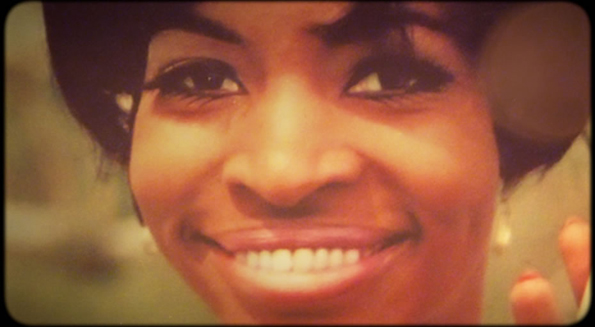
Maxine Brown
Maxine was basically discovered in New York; she recorded for another label too but was discovered by a woman who owned a record company and then she had numerous hits, “On My Mind,” “Something You Got” and a couple more. So they have been friends for years and performed many times together and actually when we did the girl-group tribute in New York City, both were on the bill and I took note of how good both were so I wanted to get them down to New Orleans.
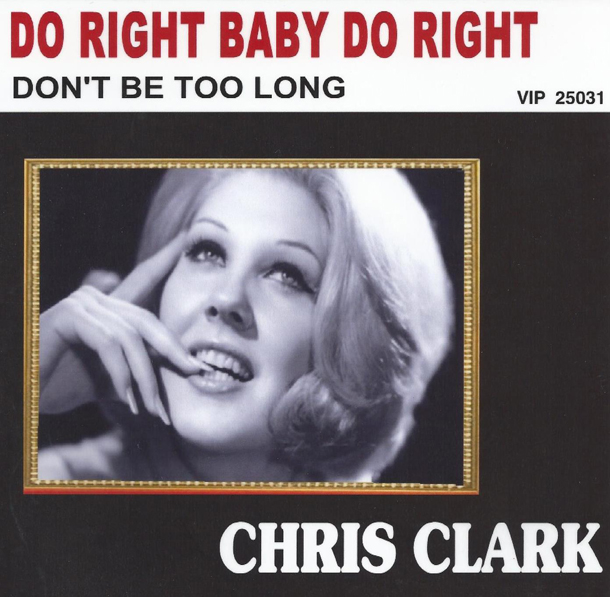
Chris Clark was a very tall, Amazonian, beautiful blonde from California who caught the eye of Berry Gordy and she recorded for Motown. She never had huge Motown hits –she had one song that had kind of like a great mod sound to it called “Love’s Gone Bad.”
It wasn’t that she had bad material — she had great writers like Smokey Robinson and Holland-Dozier-Holland — but nothing seemed to click for her. … Eventually, as her records were not selling, she turned to writing and producing. So she was involved with one of the early staff producers with the Jackson 5. She also wrote the screenplay for “the Lady Sings the Blues” that Billie Holiday starred in. And at one point, people also don’t realize this, but she was Berry Gordy’s girlfriend before he became involved with Diana Ross.
The conference component of the Stomp builds on the history of a lot of the music we’ve discussed. What are some highlights?
There’s going to be a sit-down with the three remaining members of the Sonics … They’ve done a few interviews but their story’s never really been told in depth.
For the Riot on the Sunset Strip panel …we’re going to have Ty Wagner, two or three members of the Sloths, a couple members of the Standells and others talk all about what it was like playing on L.A.’s Sunset Strip in ’65, ’66, ’67, and talk about the riots on the Sunset Strip when police closed all the clubs so the bands couldn’t play.

The Sloths
Maxine and Chris are going to do a panel talking about what it was like from the woman’s perspective as far as recording and touring.
Another one I think will be really cool is a panel on “Central Avenu,” [sic] which was like the black Strip in L.A. in the ‘50s and ‘60s. We’re going to have Eddie Daniels and Kent “Boogaloo” Harris talk about their experiences there during their careers.
We also have two people who did a lot of interesting research – an artist named Hudson Marquez who’s the first person who fought to rediscover Professor Longhair and he also rediscovered Papa Lightfoot. And then Terry Pattison, a New Orleans resident record collector who did a lot of searching out of the Baton Rouge area bluesmen when he was going to LSU.
Each night of Stomp concerts features seven hours straight of non-stop music, so its reputation for getting a little crazy is understandable. What kind of outlandishness have you seen over the years?
There was Nathaniel Mayer, who came onstage and complained that he wanted to know where his limo was. He had ended up getting picked up in a station wagon, and he went on a rant for that—then proceeded to do an amazing show.
The Legendary Stardust Cowboy—that was something for the ages. I think he stripped down to his underwear at one point.that was something for the ages.
At an early Stomp, we had Lazy Lester, James Burton … Scotty Moore, Herb Remington all playing together for a while onstage.
Or seeing Rocky Erickson play and then watching this crazy backstage banter between[him and] Dave Bartholomew. And Allen Toussaint’s band hanging out with Rocky Erickson and his band—that was quite interesting…
This year’s Stomp goes from October 3-5. Learn more at Ponderosastomp.com
Contributor Jennifer Odell is a freelance writer covering New Orleans music, jazz and pop culture.








